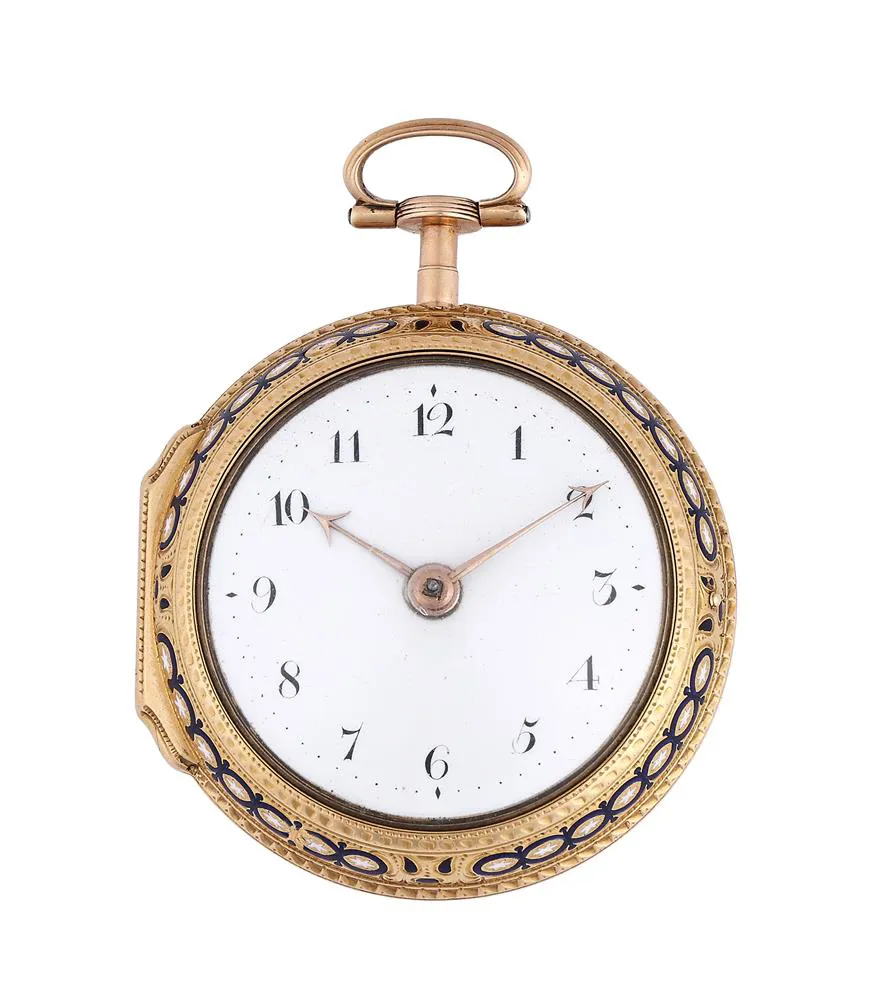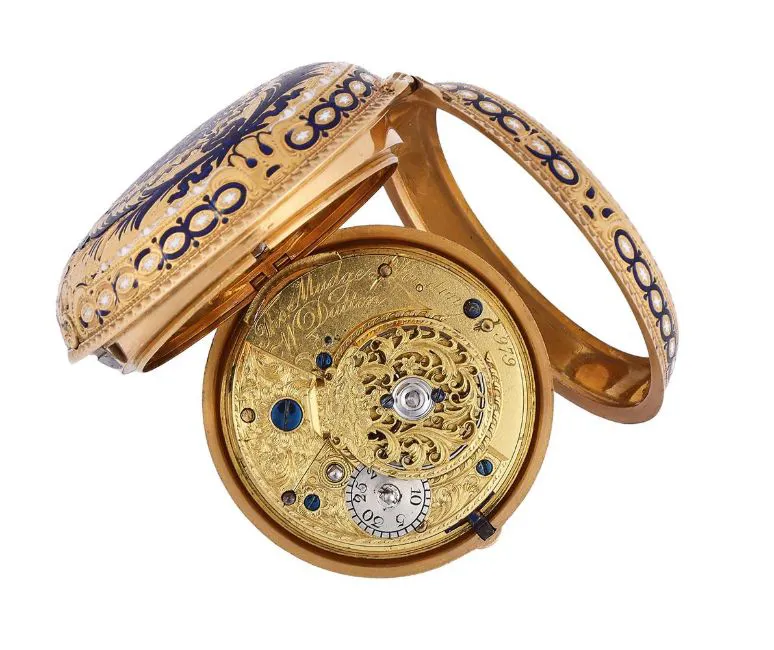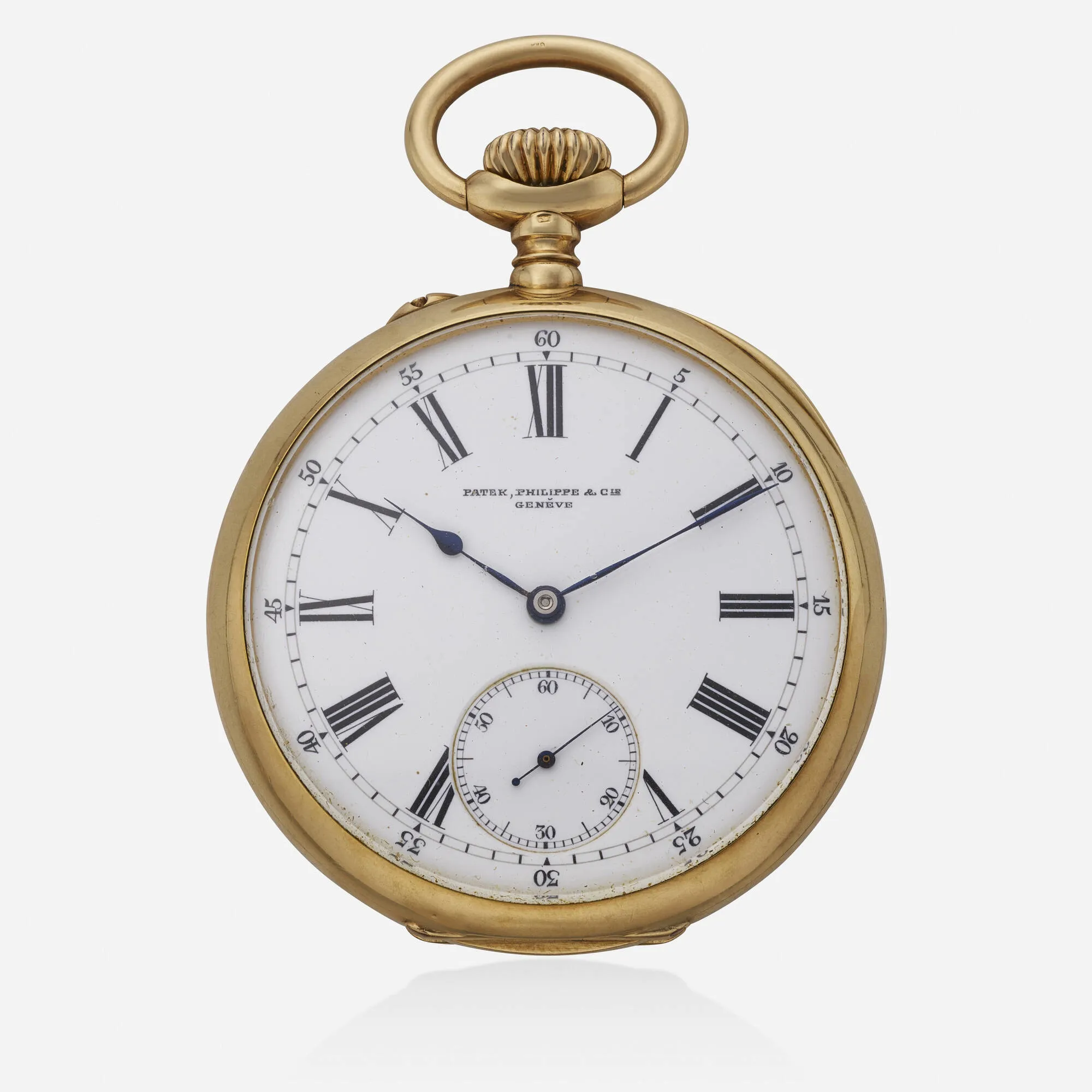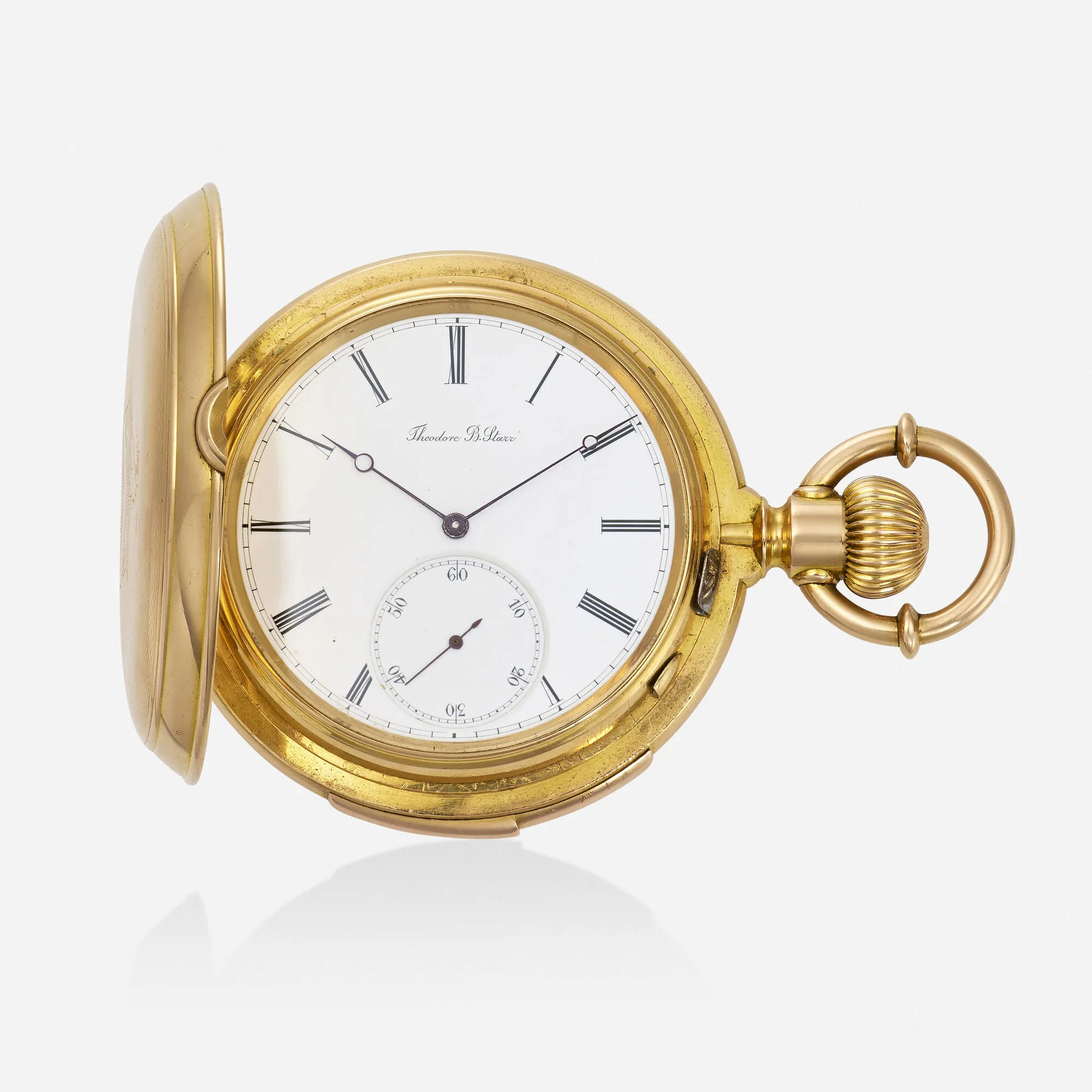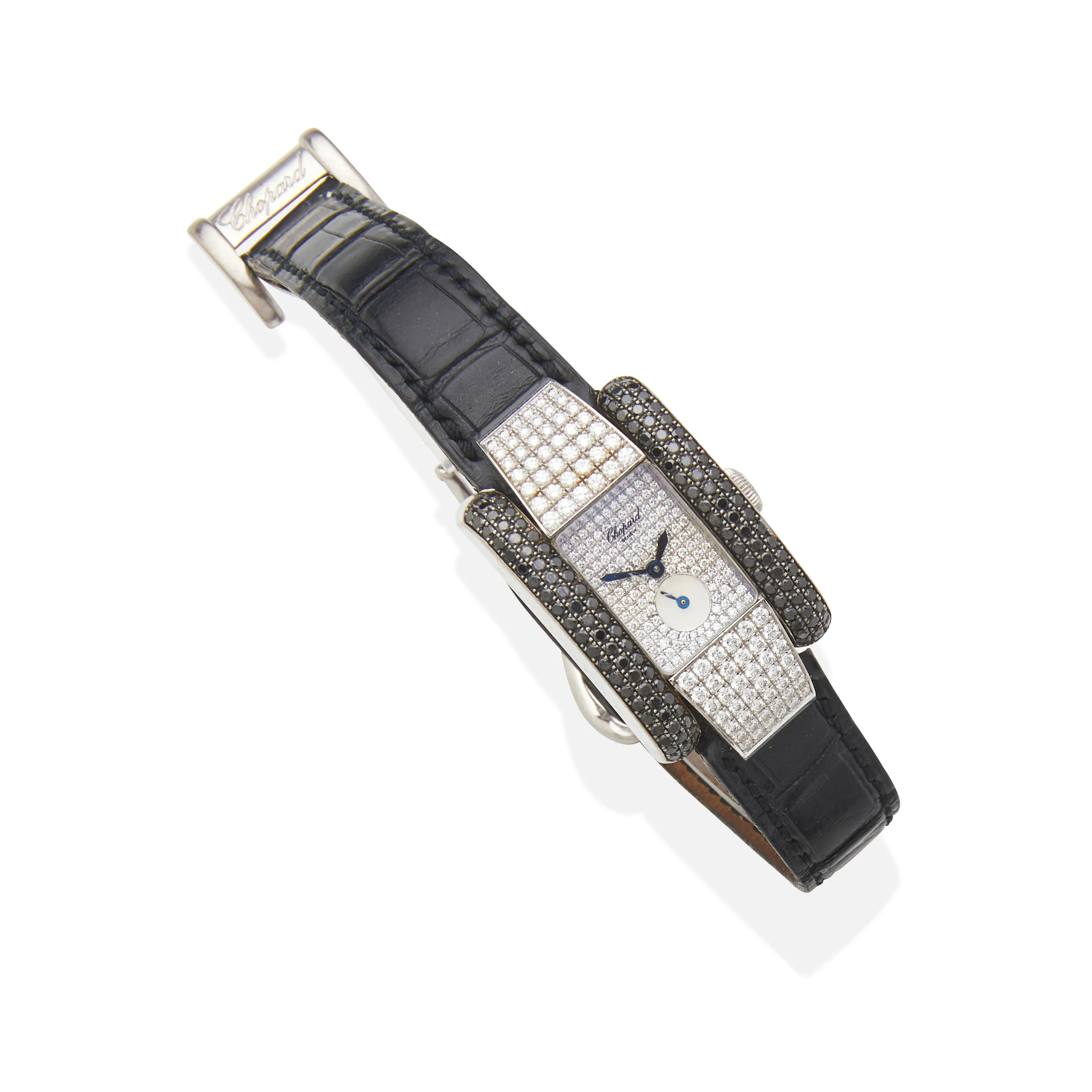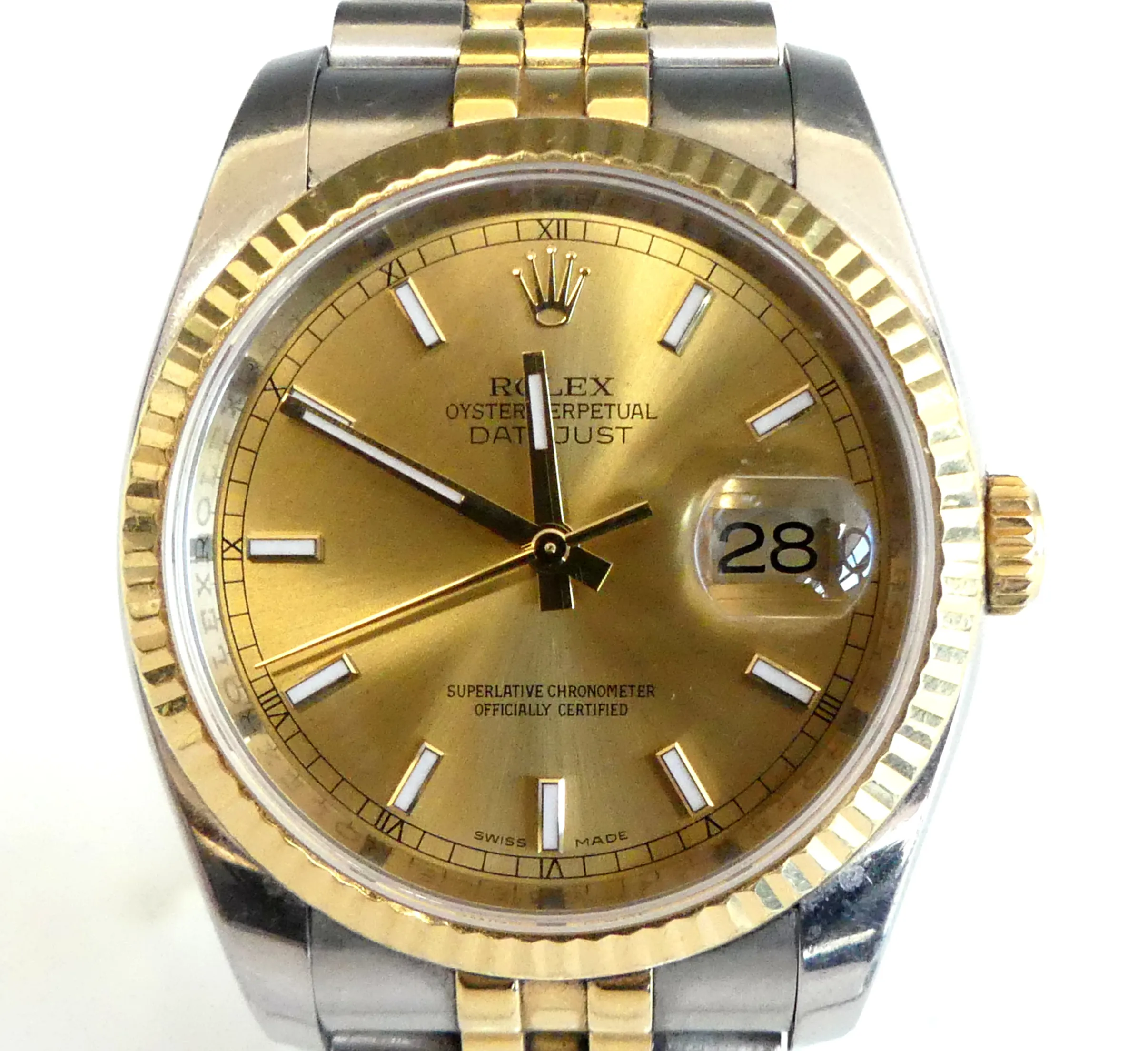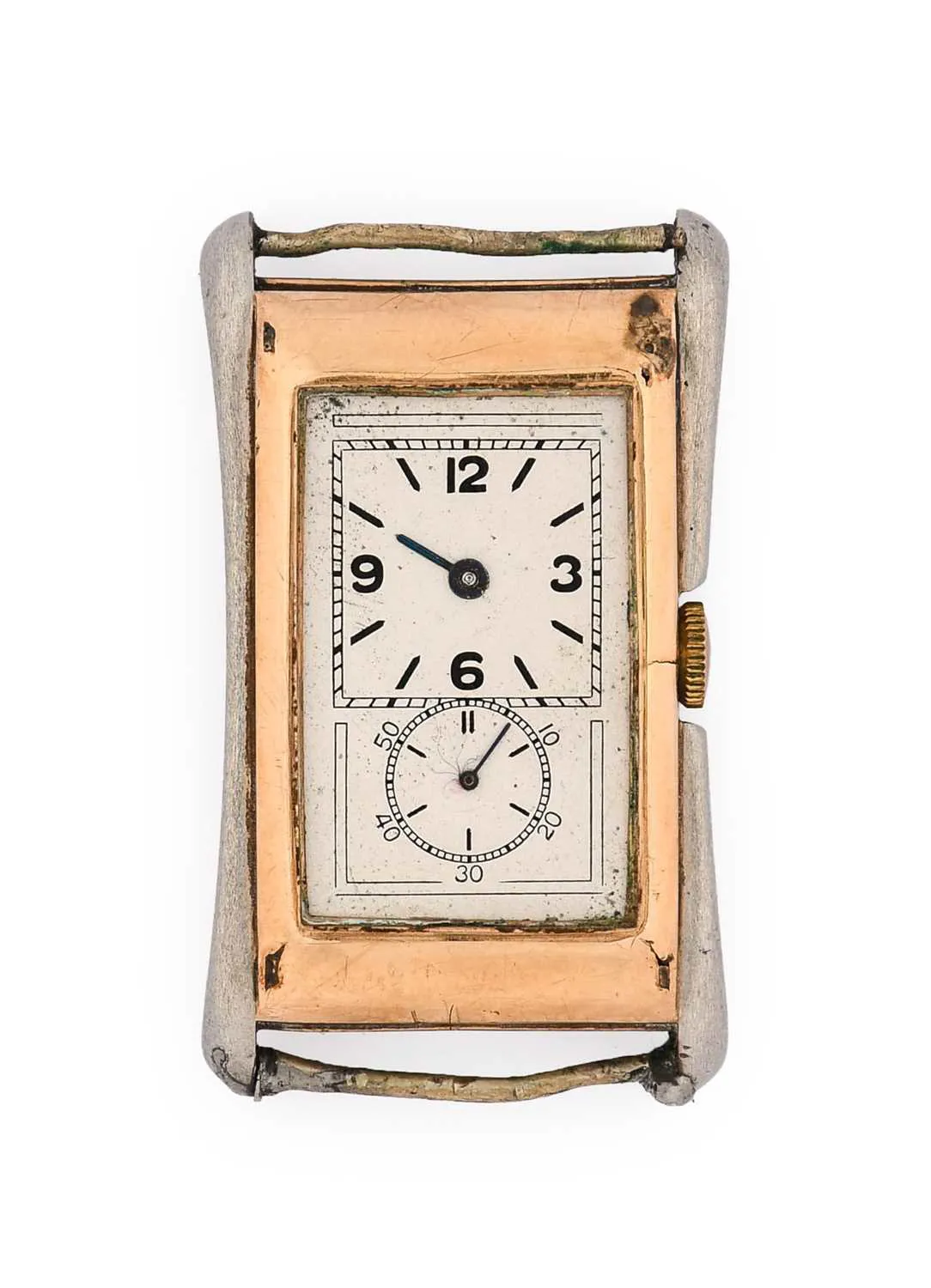Source:
Event:
Date:
Lot Number:
Condition: -
Year of Production: 1773
Case Size: 48mm
Case Material: Yellow gold
Dial Color: White
Bracelet/Strap: -
Movement Type: -
Box: No
Papers: No
Location: United Kingdom
Estimates 3,270 - 4,578 USD
Sale Price
Description
A FINE GEORGE III ENGRAVED GOLD AND BASSE-TAILLE ENAMEL PAIR-CASED CYLINDER POCKET WATCH
THOMAS MUDGE AND WILLIAM DUTTON, LONDON, 1773
The gilt full plate single fusee movement with four square section baluster pillars pinned through the backplate, scroll-pierced stop-iron block and cylinder escapement regulated by sprung three-arm steel balance with Tompion type regulation, the backplate with fine asymmetric foliate scroll pierced and engraved balance cock with faceted diamond endstone, herringbone bordered rim and grotesque mask at the junction with wedge-shaped leafy scroll engraved foot flanked by silvered regulation disc set within adjacent applied scroll engraved panel infill opposing signature Tho: Mudge, W. Dutton, London and numbered 979 , with gilt brass dust cover similarly signed Tho: Mudge, W. Dutton, London , with slightly later circular white enamel Arabic numeral dial with vertically aligned numerals and gold arrow hands, the inner case with suspension post with bow at twelve o'clock, the outer case engraved and parcel cobalt blue enamel decorated with floral spray within oval panel and tied-ribbon and leafy-spray inhabited surround within white heighted repeating lozenge outer border, with conforming border to bezel and bright-cut mouldings to circumference, marks for London 1773, maker PM possibly for Peter Mounier.
The pillar plate 3.6cm (1.375ins) diameter; the outer case 4.8cm (1.875ins) diameter.
Provenance:
The Leonard Fuller Collection. Purchased from Malcolm Gardner, Sevenoaks, 29 th August 1967 for £265.
Thomas Mudge was born in Exeter, Devon in 1717 and was apprenticed to George Graham before setting himself up in business at 151 Fleet Street, London in 1748. At around the time of the death of his former Master in 1751, Mudge was joined in partnership by a fellow former apprentice of Graham, William Dutton, who is recorded in Baillie, G.H. Watchmakers & Clockmakers of the World as apprenticed in 1738 and gaining his freedom of the Clockmakers' Company in 1746.The business subsequently traded from 148 Fleet Street and Mudge, whilst in partnership with Dutton, rapidly acquired a reputation as one of England's outstanding watchmakers. In around 1755, if not earlier, Mudge invented the detached lever escapement, which he first applied to a clock, but when incorporated into a watch became the greatest single improvement ever applied to them.In 1765 Mudge published the book, Thoughts on the Means of Improving Watches, Particularly those for Use at Sea, and the following year, alongside Dutton, was elevated to Liveryman. In around 1771 Thomas Mudge retired to Plymouth in order to spend more time to pursue his development of a marine timekeeper. The first of these went on trial in 1774 where it performed superbly leading to an award of 500 guineas. Mudge went on to complete two others in 1779 in the continuing attempt to satisfy the increasingly difficult requirements set by the Board of Longitude. They were tested by the Astronomer Royal, Nevil Maskelyne, and declared as being unsatisfactory. There followed a controversy in which it was claimed that Maskelyne had not given them a fair trial. A similar controversy had arisen when John Harrison had been denied the full amount of the 1714 prize by the Board of Longitude. Eventually, in 1792, two years before his death, Mudge was awarded £2,500 by a Committee of the House of Commons who decided for Mudge and against the Board of Longitude, then headed by Sir Joseph Banks.In around 1775 Dutton took both his sons (Thomas and Matthew) into the business forming a second partnership of William Dutton and Sons however the name Mudge and Dutton was often still used (mainly for watches) up to around 1790. William Dutton died in 1794 leaving the business to be continued very much in his tradition by his sons Thomas and Matthew.
The cylinder escapement was developed in around 1695 by Thomas Tompion and further refined by George Graham in 1726. This new escapement was perhaps the first developed exclusively for watch work and, as well as being a better rate keeper, the cylinder escapement also allowed movements to be made more compact (due to the escapement operating in one plane only). However, being a form of frictional rest escapement, the cylinder escapement was prone to relatively heavy rates of wear hence was less reliable than the verge (until hardened steel escape wheels and ruby cylinders were developed later in the 18th century).
An essentially identical movement to the present lot, also by Mudge and Dutton (number 1207 dated to 1781) but retaining original dial and gold pair-cases and benefitting from single family ownership since new, was sold in these rooms on 6 th October 2021 (lot 225) for £9,000 hammer.
Peter Mounier was a specialist maker of engraved and enamelled watch cases who is believed to have worked form circa 1761.
